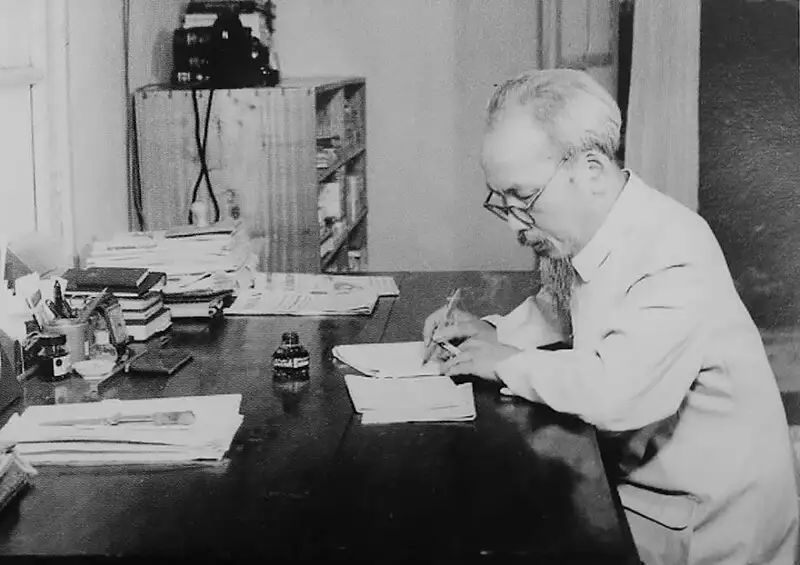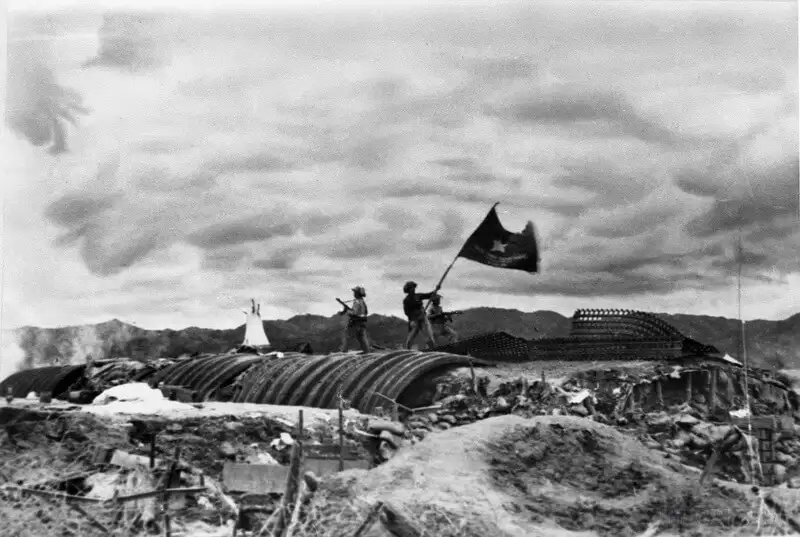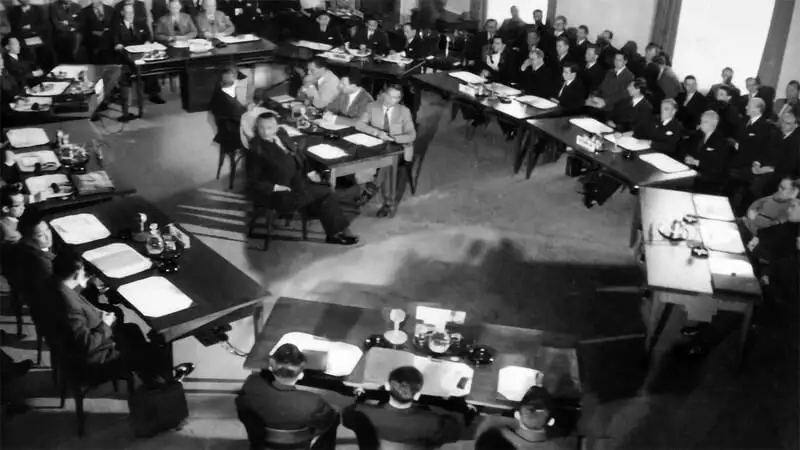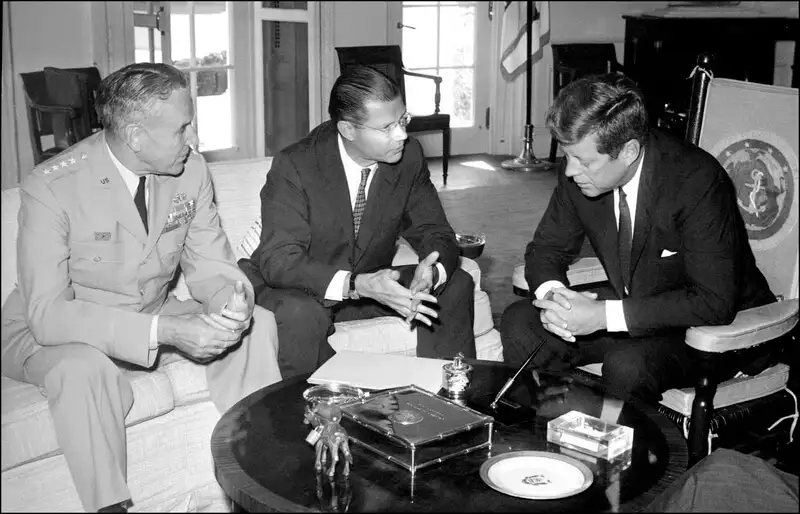The Vietnam War (1955-1975) was a conflict between communist North Vietnam, supported by the Soviet Union and China, and South Vietnam, backed by the United States. This bloody war originated from French colonial rule and the independence movement led by communist leader Ho Chi Minh.
Vietnam became a battleground in the Cold War as the United States and the Soviet Union vied for global dominance. By the war’s end, North and South Vietnam were unified, but at a tremendous cost. Let’s explore the six most significant events that laid the groundwork for the Vietnam War.
Events That Shaped the Origins of the Vietnam War
The origins of the Vietnam War are not merely the story of an internal conflict but a complex interplay of international and historical factors. Starting with French colonial rule, the rise of an independence movement under Ho Chi Minh’s leadership set the stage for a prolonged struggle. Events such as the collapse of French Indochina, the Geneva Accords that divided the country, and interventions by superpowers amid the Cold War created inevitable tensions.
The Collapse of French Indochina and the Rise of Ho Chi Minh
Vietnam became a French colony in 1877 with the establishment of French Indochina, encompassing Tonkin, Annam, Cochinchina, and Cambodia (Laos was added in 1893). During World War II, France lost control of this colony when Japanese forces occupied Vietnam.
As Japan and France vied for control, an independence movement emerged under the leadership of Ho Chi Minh, a revolutionary influenced by Lenin’s Bolshevik Revolution. In May 1941, he founded the League for the Independence of Vietnam, commonly known as the Viet Minh.
On September 2, 1945, just hours after Japan’s surrender in World War II, Ho Chi Minh declared Vietnam’s independence from France. However, when France rejected his plan, the Viet Minh turned to guerrilla warfare to fight for an independent Vietnam.

- Ho Chi Minh drafting the historic Declaration of Independence. (Source: Collected)
Did You Know?
Ho Chi Minh modeled Vietnam’s Declaration of Independence after the U.S. Declaration of Independence. He wrote: “All men are created equal; they are endowed by their Creator with certain inalienable Rights, among these are Life, Liberty, and the pursuit of Happiness!”
The Battle of Dien Bien Phu
The conflict between France and the Viet Minh reached its climax at the Battle of Dien Bien Phu, a decisive engagement. After a four-month siege, French forces were defeated by the Viet Minh under General Vo Nguyen Giap, marking the end of French colonial rule in Vietnam.
The question of who would govern Vietnam and how drew the attention of world powers increasingly concerned about the instability in the region.

- The victory flag flying at the Battle of Dien Bien Phu. (Source: Collected)
The 1954 Geneva Accords Divide Vietnam
The Geneva Accords, signed in July 1954, divided Vietnam at the 17th parallel. The North would be governed by Ho Chi Minh’s communist regime, while the South was ruled by Emperor Bao Dai. A nationwide election was scheduled two years later to unify the country, but the United States, fearing a communist victory, prevented the election from taking place.
“The temporary division of the country at the 17th parallel into two ideologically opposed states transformed Vietnam’s internal conflict into a full-scale confrontation between East and West,” notes Lien-Hang T. Nguyen, Associate Professor of U.S. and East Asian History at Columbia University.

- The 1954 Geneva Conference marking the division of Vietnam. (Source: Collected)
The Cold War
Vietnam’s division occurred amid the Cold War, as tensions between the United States and the Soviet Union peaked. In 1949, Mao Zedong proclaimed the People’s Republic of China, and by January 1950, China and the Soviet Union officially recognized the communist Democratic Republic of Vietnam.
During the Cold War, the United States adopted a policy of “containment.” President Harry S. Truman’s Truman Doctrine pledged political, military, and economic support to democratic nations facing communist threats. His successor, President Dwight D. Eisenhower, introduced the Domino Theory, asserting that a communist victory in Vietnam would trigger a domino effect across Southeast Asia—and thus must be stopped at all costs.
“The Vietnam War was simultaneously a struggle to resolve the issues of European imperialism in a new postcolonial context, a confrontation between Marxism-Leninism and Capitalist Democracy, and a conflict between Vietnamese factions,” explains Lien-Hang T. Nguyen, Associate Professor of U.S. and East Asian History at Columbia University.

- The Cold War with the Eastern and Western blocs. (Source: Collected)
The Overthrow of Ngo Dinh Diem
After Emperor Bao Dai was deposed, Ngo Dinh Diem, a Catholic nationalist, rose to power. His staunch anti-communist stance earned U.S. support, helping him assume leadership. However, Diem’s favoritism toward the minority Catholic community sparked widespread opposition across South Vietnam. In May 1963, eight Buddhists were killed by his regime during a protest in Hue.
In response, Buddhist monk Thich Quang Duc self-immolated at a busy Saigon intersection. Other monks and nuns followed suit, leading to what became known as the “Buddhist Crisis.” The United States began losing faith in Diem’s leadership.
In November of that year, the U.S. backed a military coup in which Ngo Dinh Diem and his brother, Ngo Dinh Nhu, were assassinated. (Less than three weeks later, U.S. President John F. Kennedy was also assassinated.) The coup ushered in a period of chaos, with 12 different governments ruling South Vietnam between 1963 and 1965.

- President John F. Kennedy discussing Vietnam strategy. (Source: Collected)
The Gulf of Tonkin Incident
The Gulf of Tonkin Incident, also known as the U.S.S. Maddox Incident, marked the official entry of the United States into the Vietnam War.
“In the summer of 1964, the Johnson administration secretly planned to expand U.S. military involvement in Vietnam. Officials determined that any such escalation required Congressional support, and the Gulf of Tonkin Incident provided the opportunity to secure that approval,” explains Fredrik Logevall, Laurence D. Belfer Professor of International Affairs at Harvard’s John F. Kennedy School of Government.
On August 2, 1964, the U.S.S. Maddox encountered three Soviet-built North Vietnamese torpedo boats in the Gulf of Tonkin. The Maddox fired warning shots and was met with torpedo and machine-gun fire in return. On August 4, the destroyer Turner Joy and U.S.S. Maddox reported being ambushed, though historians later questioned the accuracy of the Turner Joy’s account.

- Map and the Maddox during the 1964 Gulf of Tonkin Incident. (Source: Collected)
Conclusion
Through this exploration of the origins of the Vietnam War, Pywar hopes to have shed light on the key historical events that led to this prolonged and tragic conflict. From the collapse of French Indochina and Ho Chi Minh’s independence movement to the Cold War’s influence and events like the Geneva Accords, the overthrow of Ngo Dinh Diem, and the Gulf of Tonkin Incident, each factor contributed to the war’s complex backdrop.
Translated by: Le Tuan
Source: history.com – 6 Events That Laid the Groundwork for the Vietnam War



